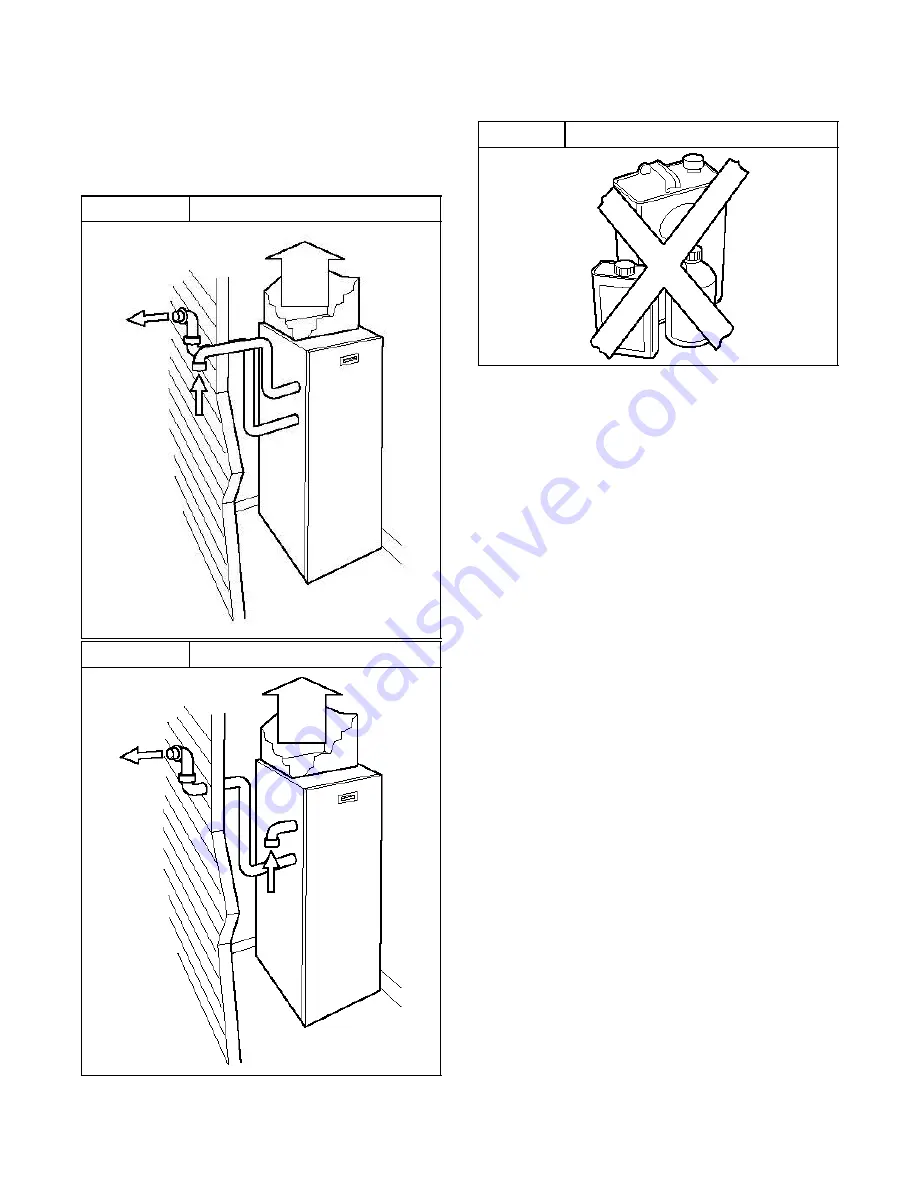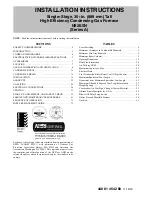
4
Specifications subject to change without notice.
440 02 7000 02
doors. This type of application will have only 1 pipe running from the
furnace to the outdoors. (See Fig. 3.) The other pipe will terminate in
the same space as the furnace and is the source of combustion air for
your furnace. Therefore, the furnace must not be enclosed in an air-
tight room or be sealed behind solid doors. It must have adequate air-
flow for efficient combustion and safe ventilation. Do not obstruct the
combustion
−
air pipe in any way. The vent pipe must terminate out-
side the structure and must not be obstructed in any way. Do not block
or obstruct air openings or space around furnace.
Figure 2
Exterior Vent Pipes
Figure 3
Interior Combustion
−
air pipe
Keep the area around your furnace clear and free of com-
bustible materials, gasoline, and other
flammable
liquids and va-
pors (Figure 4).
Figure 4
NO combustible materials near furnace
S
Do not cover the furnace, store trash or debris near it, or in any
way block the
fl
ow of fresh air to the unit.
In addition to the safety rules above, make sure that the following
combustion
−
air requirements are met for non
−
direct vent applica-
tions:
S
Combustion air must be clean and uncontaminated with chlorine
or fluorine. These compounds are present in many products
around the home, such as: water softener salts, laundry bleaches,
detergents, adhesives, paints, varnishes, paint strippers, waxes,
and plastics.
S
Make sure the combustion air for your furnace does not contain
any of these compounds. During remodeling be sure the
combustion air is fresh and uncontaminated. If these compounds
are burned in your furnace, the heat exchangers may deteriorate.
S
A furnace installed in an attic or other insulated space must be
kept free and clear of insulating material. Examine the furnace
area when the furnace is installed or when insulation is added.
Some insulation materials may be combustible.
S
Should the gas supply fail to shut off or if overheating occurs,
shut off the gas valve to the furnace before shutting off electrical
supply.
This furnace contains SAFETY DEVICES which must be
MANUALLY RESET. If the furnace is left unattended for an exten-
ded period of time, have it checked periodically for proper operation.
This precaution will prevent problems associated with no heat, such
as frozen water pipes, etc. See “Before You Request a Service Call”
section in this manual.
BEFORE STARTING YOUR FURNACE
Examine the furnace installation to determine that:
1. All flue gas carrying areas external to the furnace (i.e.
chimney, vent connector) are clear and free of obstructions.
2. The vent connector is in place, slopes upward and is
physically sound without holes or excessive corrosion.
3. The return
−
air duct connection(s) is physically sound, is
sealed to the furnace casing, and terminates outside the
space containing the furnace.
4. The physical support of the furnace is sound without
sagging cracks, gaps, etc. around the base.
5. There are no obvious signs of deterioration of the furnace.






























